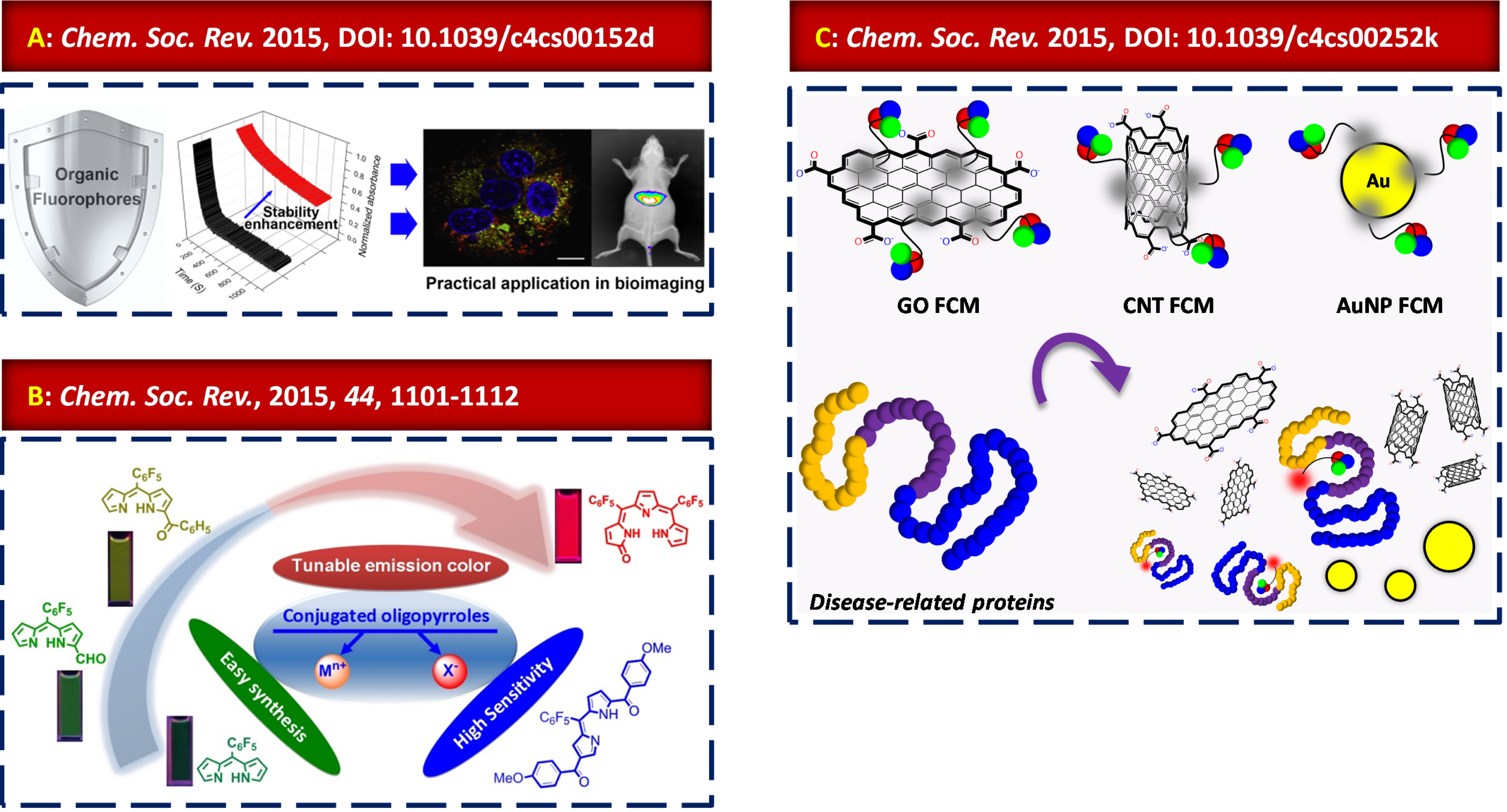Recently, three review papers have been sequentially published in Chem. Soc. Rev. (IF: 30.425) of RSC. These research reviews are supported by National 973 Program “Basic research of molecular probes to identify tumor specific serum markers” led by Prof. Tian He. Prof. Weihong Zhu (Chem. Soc. Rev., 2015, DOI: 10.1039/c4cs00152d), Prof. Yongshu Xie (Chem. Soc. Rev., 2015, 44, 1101-1112) and associate research fellow Xiaopeng He (Chem. Soc. Rev., 2015, DOI: 10.1039/c4cs00252k) contributed to the systematic reviews on the applications of functional dyes in medicinal biological research areas.

To address the low stability of fluorescence dyes in biological systems, Weihong Zhu’s research group employed ingenious methods such as nanoparticle encapsulation and molecular engineering for stability-enhanced construction of functional fluorogenic materials. Then, they explored the application of these materials in cancer cell and in vivo imaging, as well as in the detection of disease biomarkers in the serum. The serial papers were published in JACS, Chem. Sci., Biomaterials and Adv. Healthcare Mater.
Porphyrin is a natural organic dye widely distributed in a variety of organisms with low toxicity and high biocompatibility. However, owing to its weak fluorescence response to some important analytes and difficulty in signal modulation, ion imaging applications of porphyrins have been limited. To address this issue, Yongshu Xie’s research group designed and constructed novel types of porphyrinoids and linear π-conjugated oligopyrroles with significantly enhanced response signal. Their use in recognition of biologically important metal ions and anions has been exploited. Related papers were published in JACS (2013) and Angew. Chem. Int. Ed. (2014). Based on these systematic researches, a tutorial review entitled “Fluorescent and colorimetric ion probes based on conjugated oligopyrroles”has been recently published in Chem. Soc. Rev. (2015, 44, 1101-1112).
Intercellular glycoligand-receptor recognitions are fundamental biological processes, harnessing a number of dynamic cellular events. The clear understanding of these interactions may aid not only the decipherment of the “glycomics”, but also the advancement of the targeted theranostics of human diseases. Nevertheless, because of the limitations of current biochemical techniques such as their complicated manipulation procedures, long detection time and high detection/instrument cost, sensitive probing of glycoligand-receptor recognitions remains a key challenge in chemical glycobiology. By combining the modular and effective click chemistry with judicious molecular and materials self-assembly strategies, Xiao-Peng He’s research group has developed simple fluorogenic or electrochemically active glycoprobes for the delineation of the glycomics. Using these probes, cancer cells that overexpress glycoligand receptors have been sensitively and specifically captured in situ. The serial papers were published in JACS, Adv. Mater., Chem. Sci., Sci. Rep. and Chem. Commun.




